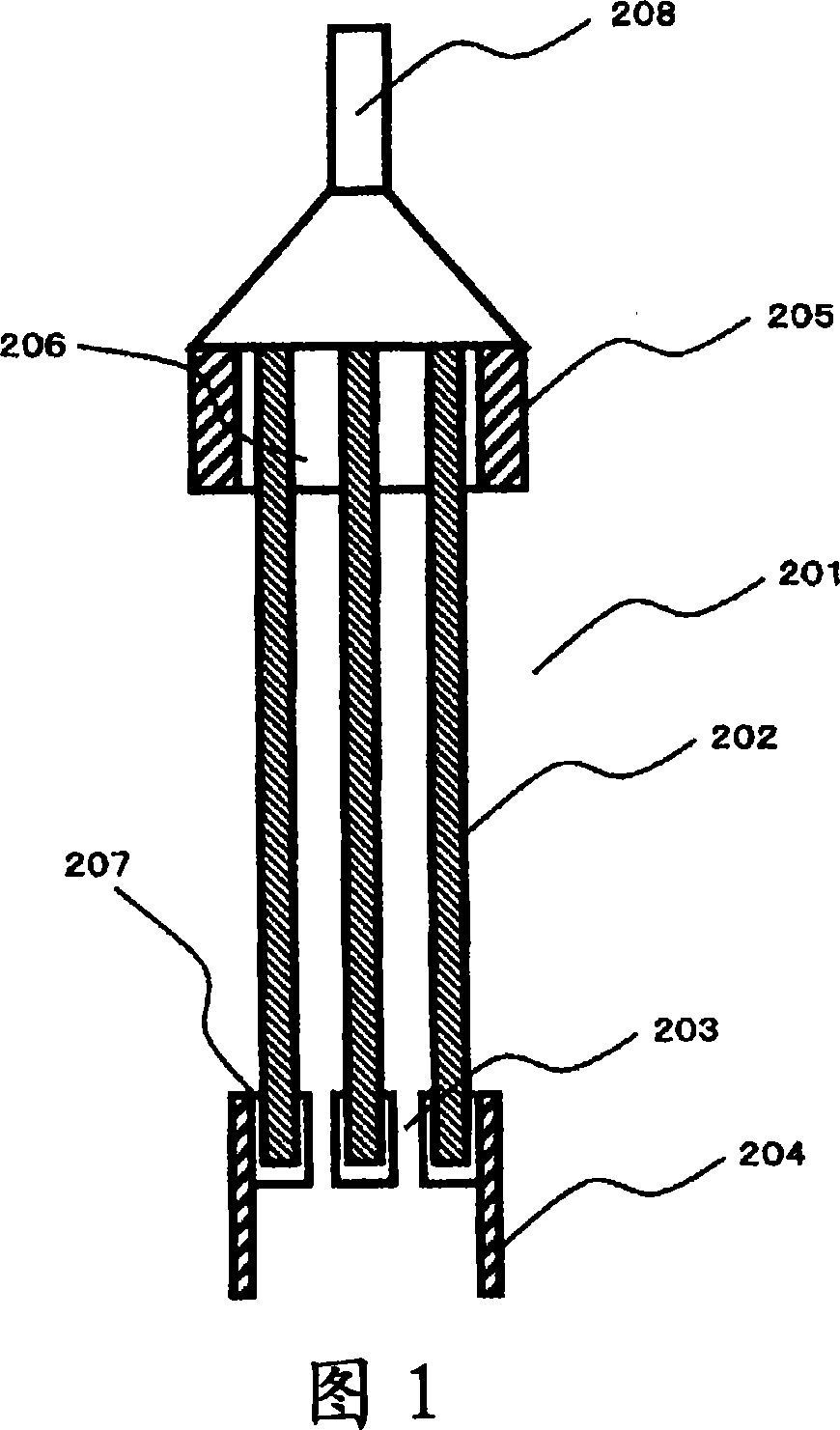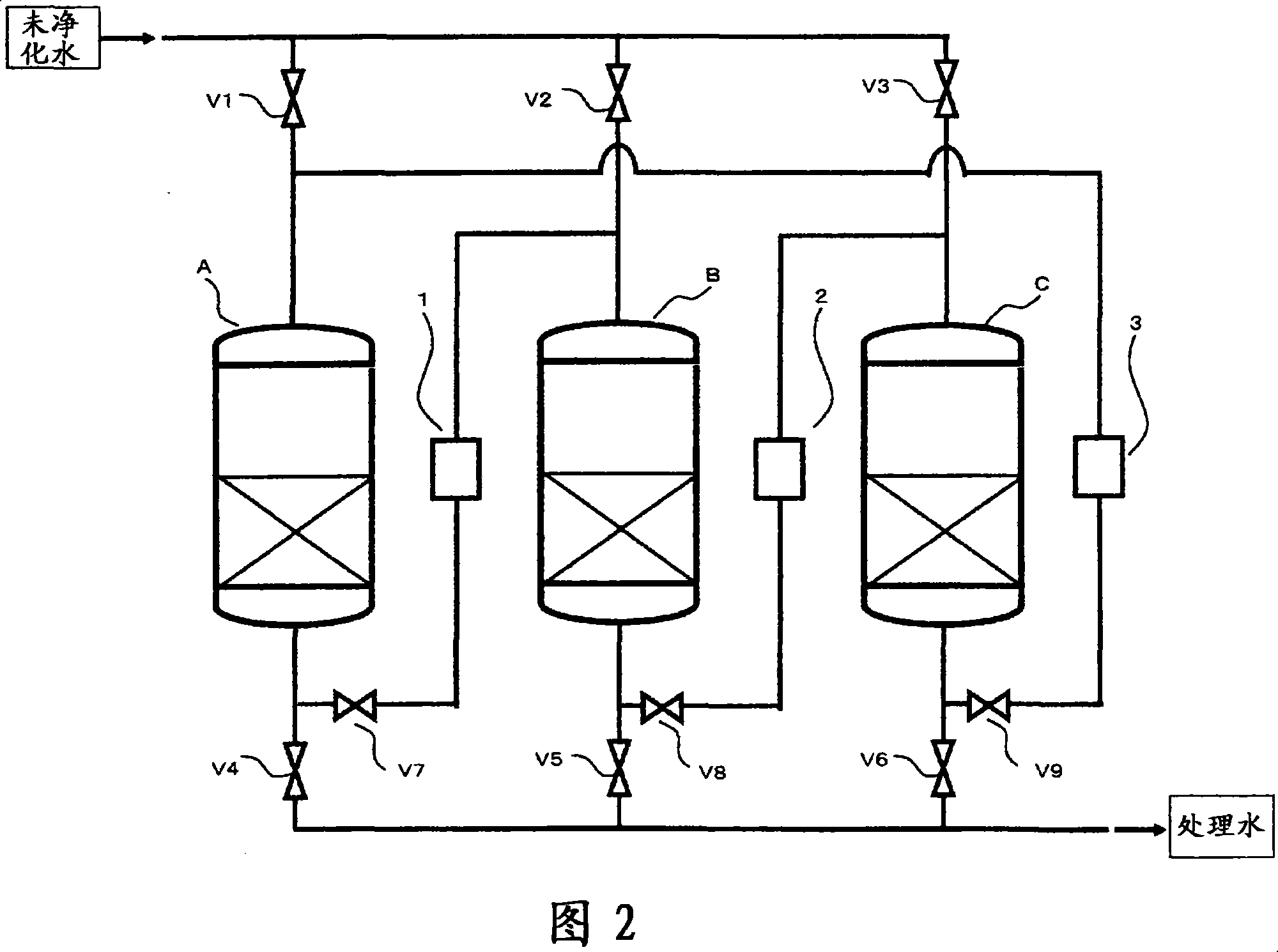Waste water treatment device and method
A water treatment device and water treatment technology, applied in chemical instruments and methods, biological water/sewage treatment, adsorption water/sewage treatment, etc., can solve the problem of increasing the regeneration frequency and exchange frequency of ion exchange resin, and increasing the phosphorus concentration in treated water. , the scale of the ion exchange device increases, etc., to achieve the effect of low cost
- Summary
- Abstract
- Description
- Claims
- Application Information
AI Technical Summary
Problems solved by technology
Method used
Image
Examples
Embodiment
[0271] The present invention is described based on the embodiments.
[0272] In Examples, various physical properties and the like of molded bodies were measured according to the methods described below.
[0273] ・Observe molded body with scanning electron microscope
[0274] The formed body was observed with a scanning electron microscope model S-800, which is a scanning electron microscope (SEM) manufactured by Hitachi Ltd. .
[0275] · Cutting of molded body
[0276] The shaped body was vacuum-dried at room temperature, and isopropyl alcohol (IPA) was added to the dried shaped body to impregnate with IPA. Then, the shaped bodies were sealed together with IPA in gelatin capsules having a diameter of 5 mm, and the sealed shaped bodies were frozen in liquid nitrogen. The frozen shaped body together with the capsule is cut with a chisel. Select the cut shaped bodies, and use an appropriate one as a microscope sample.
[0277] ·Surface porosity
[0278] A surface image of ...
preparation example 1
[0308] (Preparation Example 1) Preparation-1 of Inorganic Ion Adsorption Material
[0309] Prepare 1L of 0.15mol zirconium oxychloride (ZrOCl2 ) aqueous solution. The solution contained 13.7 g of metal ions as zirconium. Add 84.0g ferrous sulfate crystals (FeSO 4 · 7H2O) and dissolved in the solution in water under stirring. The amount of ferrous sulfate added corresponds to 0.3 mol of ferrous ions (F / T (molar ratio): 0.67).
[0310] Next, a 15% by weight sodium hydroxide solution was added dropwise to the aqueous solution with stirring until the pH of the solution reached 9, and then a blue-green precipitate was produced. Subsequently, air was blown into the aqueous solution in an amount of 10 L / hour while heating it to 50°C. When air is continuously blown into the solution, the pH of the aqueous solution decreases. In this case, a 15% by weight sodium hydroxide solution was added dropwise to the aqueous solution to maintain the pH at 8.5-9. After continuously blowing a...
preparation example -2
[0312] (Preparation Example-2) Preparation-1 of Porous Molded Body
[0313] In a separable flask, 10 g of ethylene-vinyl alcohol copolymer (EVOH, Nippon Synthetic Chemical Industry Co., Ltd., Soarnol E3803 (trademark)), 10 g of polyvinylpyrrolidone (PVP, BASF Japan Co., Ltd., Luvitec K30 powder (trademark)) and 80 g of dimethylsulfoxide (DMSO, Kanto Chemical Co., Ltd.) were dissolved in water heated to 60°C to obtain a homogeneous polymer solution.
[0314] To 100 g of the polymer solution was added 92 g of the inorganic ion-adsorbing material prepared in Preparation Example 1, and the mixture was sufficiently stirred to form a slurry. The resulting slurry mixture was heated to 40° C. and fed into a cylindrical rotating vessel having a nozzle with a diameter of 5 mm opening on the side. The vessel was then rotated by centrifugal force (15G) to form droplets through the nozzle, the droplets were discharged into a coagulation bath filled with water at 60°C, and the slurry mixtu...
PUM
| Property | Measurement | Unit |
|---|---|---|
| The average particle size | aaaaa | aaaaa |
| Specific surface area | aaaaa | aaaaa |
| The average particle size | aaaaa | aaaaa |
Abstract
Description
Claims
Application Information
 Login to View More
Login to View More - R&D
- Intellectual Property
- Life Sciences
- Materials
- Tech Scout
- Unparalleled Data Quality
- Higher Quality Content
- 60% Fewer Hallucinations
Browse by: Latest US Patents, China's latest patents, Technical Efficacy Thesaurus, Application Domain, Technology Topic, Popular Technical Reports.
© 2025 PatSnap. All rights reserved.Legal|Privacy policy|Modern Slavery Act Transparency Statement|Sitemap|About US| Contact US: help@patsnap.com



